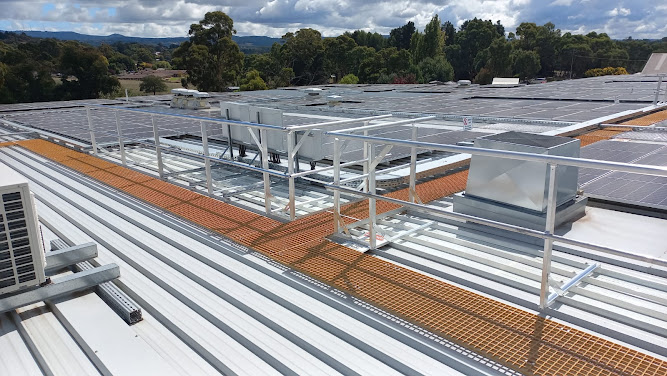Roof Safety Solutions - Securing & Saving Construction Workers Lives!
Roof
safety systems are critical components in the construction and
maintenance of buildings, particularly in preventing falls—a leading cause of
fatalities in the construction industry. Implementing comprehensive roof safety
measures not only complies with legal safety standards but also significantly
reduces the risk of accidents, ensuring that workers are protected while
performing tasks at height. Here’s a detailed look at how roof safety systems
work to secure and save lives on construction sites.
Essential Components of Roof Safety Systems
·
Guardrails: Permanent or
temporary guardrails are one of the most effective ways to prevent falls.
Installed along the edges of the roof, guardrails provide a physical barrier
that prevents workers from stepping off the edge.
·
Personal Fall Arrest Systems
(PFAS): These systems typically include a full-body harness, a lanyard, and an
anchor point. In the event of a slip or fall, the system arrests the fall and
distributes the forces across the worker's body to minimise injury.
·
Warning Line Systems: These
consist of ropes, wires, or chains that demarcate safe working areas. They are
set up around the perimeter of the roof to warn workers when they are
approaching an unprotected edge.
·
Safety Nets: Installed below
work areas, safety nets catch falling workers and debris, providing a secondary
form of fall protection where other systems may not be applicable.
·
Roof Anchors: These are
secure points where lanyards and lifelines can be attached. Anchors must be
capable of supporting the considerable force of a falling person and are
typically bolted or welded to the structure.
Benefits of Roof Safety Systems
·
Preventing Fatalities and
Injuries: The primary benefit of roof safety systems is the significant
reduction in fall-related fatalities and serious injuries. These systems
provide necessary safeguards that protect workers from the leading dangers in
roof work.
·
Compliance with Safety
Regulations: In many regions, installing roof safety systems is not just best
practice but a legal requirement under occupational safety and health
regulations. Compliance helps avoid legal liabilities and hefty fines.
·
Enhanced Worker Confidence:
When workers feel safe, they are likely to be more productive and efficient.
Knowing that effective safety measures are in place can reduce anxiety about
working at height.
·
Reduced Costs: Investing in
robust roof safety systems can lead to lower insurance
premiums and reduce the potential costs associated with workplace accidents,
including medical bills, lost workdays, and compensation claims.



Comments
Post a Comment